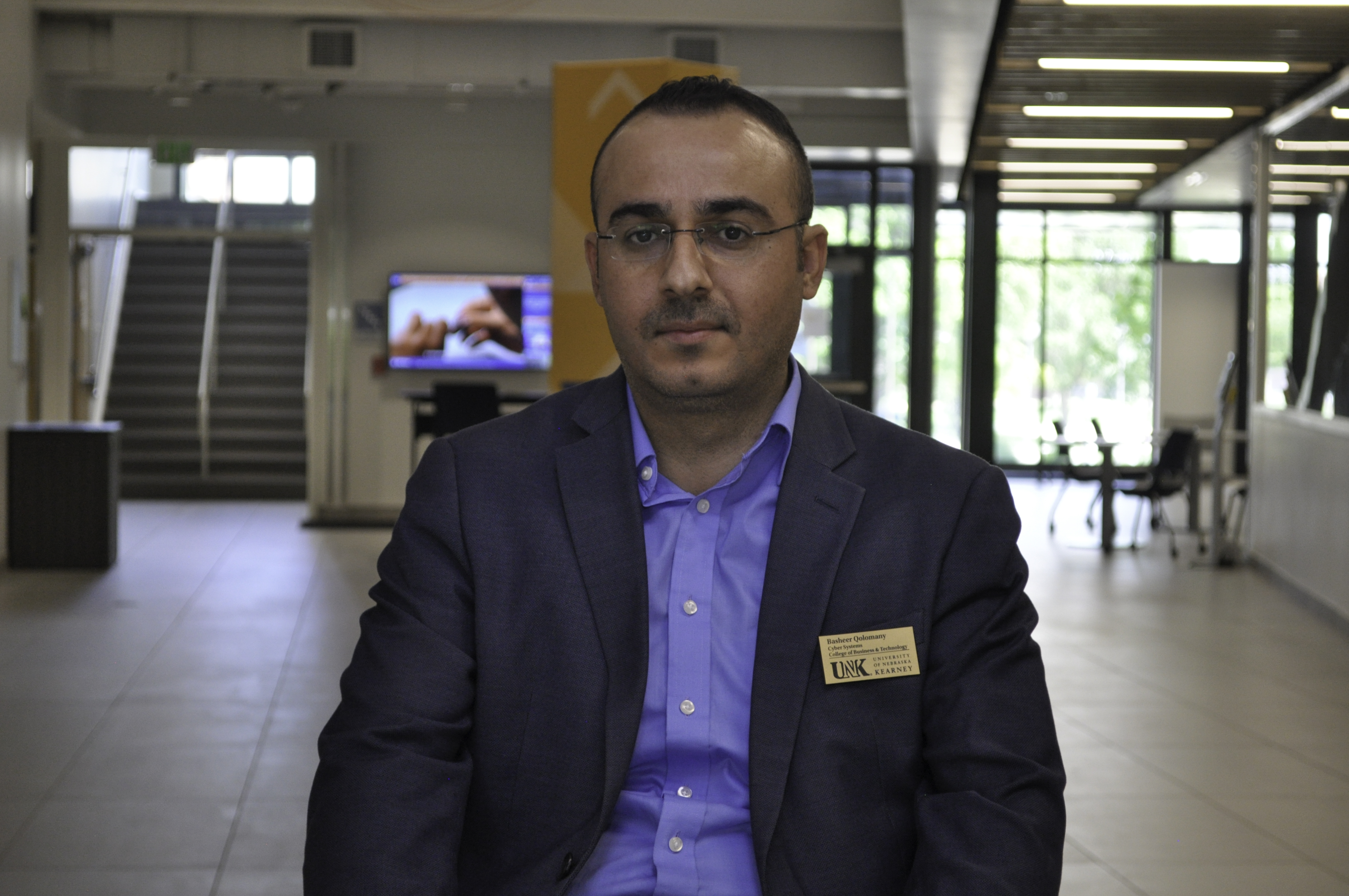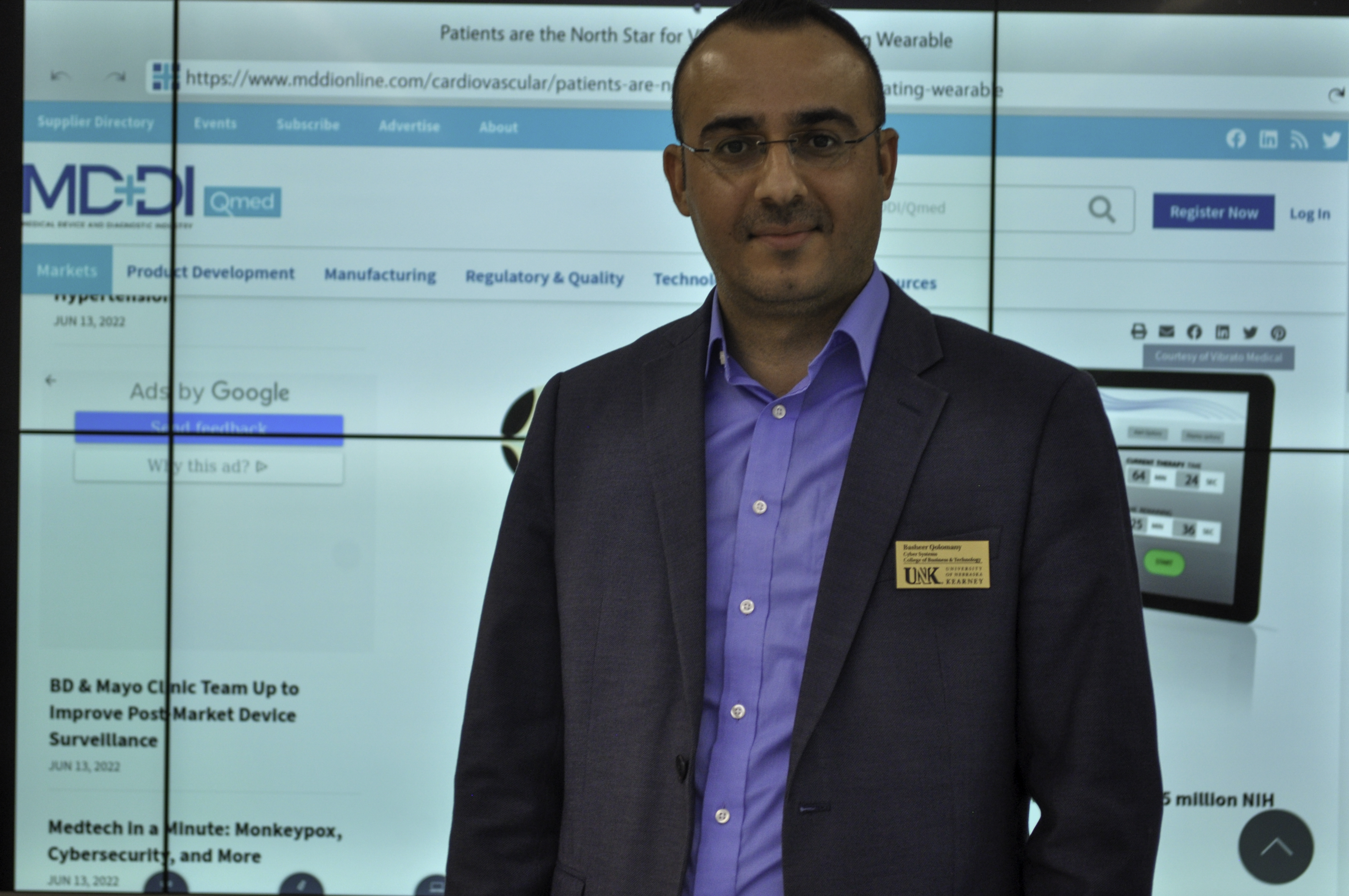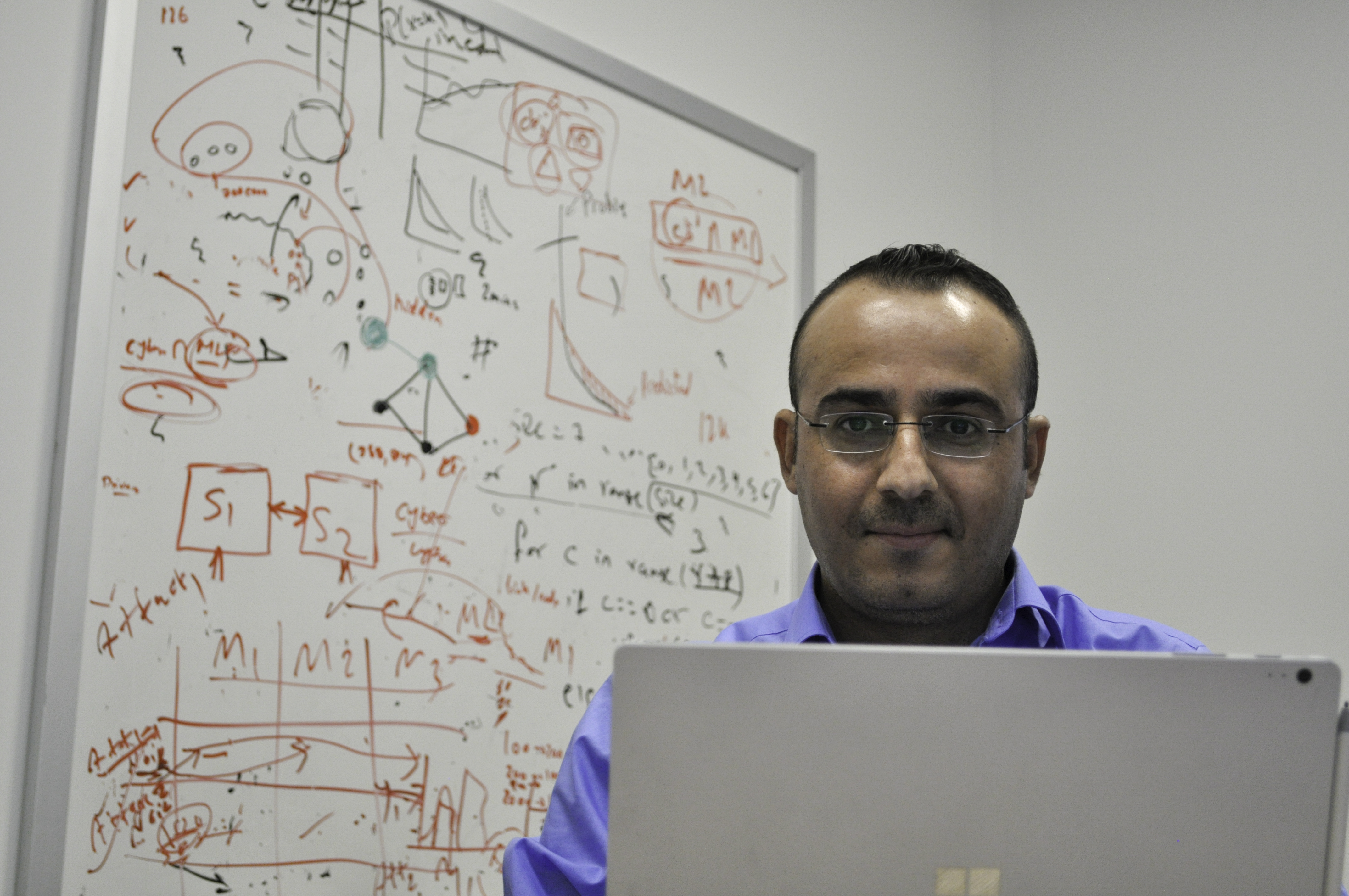Basheer Qolomany and Team Are Making Strides with PAD Research
Posted: September 20, 2022 12:00:00 AM CDT
Nestled in an unassuming office at UNK’s College of Business and Technology, Basheer Qolomany is doing much more than creating lessons and grading papers. As an assistant professor of computer science in the Department of Cyber Systems at the University of Nebraska at Kearney, he is using his academic knowledge and passion for helping others to impact his community. As he discusses his recent project, Qolomany describes his desire to use his understanding of computer science to help those affected by peripheral artery disease (PAD). As he states, PAD can be “easily confused with signs of aging” making his research about this disease even more important. He explains how the ability to study the habits of those prone to PAD by using wearable technologies is a vast improvement over the standard tests requiring specialized technicians as well as a clinical environment. PAD, a common cardiovascular disease, affects veterans 10 times more than non-veterans. With the significant risk of both mortality and limb loss, having a novel approach for detection and monitoring is paramount. Through this research, Qolomany hopes to create an environment that will significantly reduce the effects of PAD. He plans to use his background in computer science and the skilled team of researchers he collaborates with to not only identify PAD but to help those whose lives would potentially be drastically affected by this disease.
Using his knowledge of metaheuristics, machine learning, deep learning, and big data analytics to detect and monitor PAD, Qolomany has secured $150,000 for this project. Sponsored by the University of Nebraska, this project is part of a collaborative plan. In addition to Qolomany, the research team consists of Sara Myers, associate professor of biomechanics at the University of Nebraska Omaha, Fadi Alsaleem, assistant professor of architectural engineering at University of Nebraska-Lincoln, Iraklis Pipinos, professor of vascular surgery at the University of Nebraska Medical Center, and Jianghu Dong, assistant professor of biostatistics at the University of Nebraska Medical Center.
This research team uses a large number of real-time data streams as part of this project. Along with his colleagues, UNK’s Qolomany is interested in using data, as found via news feeds, social media, public health data and more, to first help identify high-risk groups and then use this information to inform policymakers in an attempt to help create and implement preventative interventions. According to Qolomany, his “research will have an impact on larger portions of the community in Nebraska, rural communities of the Midwest, and the entire US” which is impressive as the effect of this project started at UNK will potentially impact the public health far beyond Nebraska.
The impetus for this research project included the fact that current methods for diagnosing PAD do not allow for natural environment detection, monitoring, or management of this chronic disease. With the use of wearable technologies and machine learning designed to analyze human gait, this research team has a long-term goal of developing predictive models to support PAD diagnosis as well as monitor the progression of this disease as it occurs in the patients’ natural environments.
Qolomany, along with his research team, explains how 40-60% of patients with PAD actually go undiagnosed in a primary care setting. This pressing need led this team of researchers to produce one of the largest datasets related to the movement patterns of patients with PAD. Recruiting from vascular centers at the University of Nebraska Medical Center as well as the Omaha VA Medical Center, Qolomany and his colleagues were able to be selective in order to best provide future care for those with PAD. Understanding that this disease affects up to 10% of the American population over 40 years of age, subjects were chosen who were ages 45 and older without conditions which limited their walking capacity. Expecting their models to be accurate for both genders, more males, due to the VA population from which they were obtained, were studied than females.
Having already filed a patent, Qolomany is excited to consider the long-reaching effect of this study. According to the 2017-2021 Nebraska State Health Improvement Plan (SHIP), his work has had an impact on several Nebraska communities as well as other rural communities in the Midwest. He predicts this collaborative research will have a greater impact, potentially reaching patients across America.
Securing funds for this project is imperative to its success. While the data collected by this collaborative group is impressive, the possibilities are mind-boggling. With the ability to diagnose PAD earlier, there will naturally be the opportunity to prevent this disease from its natural progression which could help prevent the associated damaging outcomes. For those affected, this research could literally be lifesaving.
Excited about the results secured from this preliminary $150,000 project, Qolomany explained his desire to help others as well as his dreams for what could be accomplished when he shared how this “kind of research is not for financial benefits” but for the “impact on the future.” With a goal of securing support in the amount of millions of dollars to extend this research, he is looking forward to the far-reaching benefits of this project started at UNK’s College of Business and Technology.









